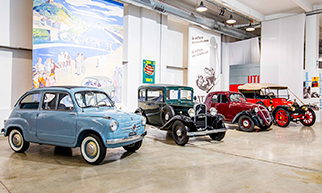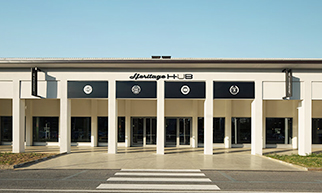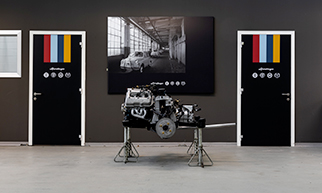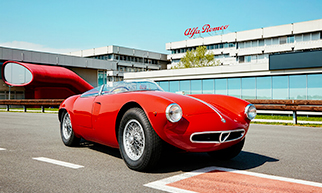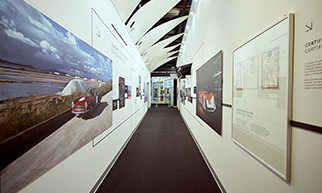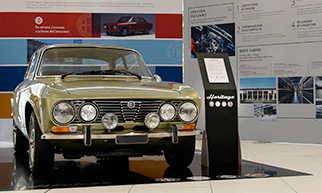Launched at the 1966 Geneva International Motor Show, it immediately became popular all over the world due to both its elegant styling and its brilliant handling, which made it the true Italian spider icon.
The last project led by Giovanni Battista “Pinin” Farina in person, the Alfa Romeo Spider had original, slender, rounded shapes, with downward-sloping bonnet and boot which earned it the nickname “cuttlefish bone”. This was not the only unofficial name acquired by the sparkling Alfa spider, which was soon known worldwide as the “Duetto”, a name which originated from a public competition but was then claimed by a famous confectionery firm, forcing Alfa to abandon it only a year after the launch.
The streamlined Spider was built with the mechanicals of the Giulia Sprint GT with the wheelbase shortened by Pininfarina by 225mm, using that of the Giulietta/Giulia Spider, soon to be replaced. Longitudinal front twin-cam engine of 1570 cc with two 40mm twin-barrel carburettors providing 109 horsepower, 5-speed transmission, independent front suspensions, rear-wheel drive and four disc brakes.
The low, sleek body with rounded front and tail had two-piece bumpers to emphasise the familiar Alfa badge in the middle, while broad grooves along the low sides added modernity to the line. The curb weight of just 990 kg helped to give the car a top speed of 185 km/h.
It also became a film star, due to the long sequences in which a young Dustin Hofmann anxiously drives it against the clock in the final scenes of the 1967 film “The Graduate”.
But Benjamin Braddock-Dustin Hoffman's desperate dash across the Golden Gate Bridge to the music of Simon and Garfunkel is not the car's only claim to planetary fame. Equally memorable was the sumptuous cruise - Genoa, Cannes, New York - on the Raffaello superliner, on which the European jet set accompanied the three Alfa Romeo Spiders in the three colours of the Italian flag (red, white and green) with destination America for the car’s official U.S. launch.
The Alfa Romeo Spider 1600 first series was followed, in 1967, by the 1750 Veloce version, with more powerful, rugged mechanicals, sophisticated hydraulically operated clutch as standard and a self-locking differential amongst the optionals, and the Junior 1300, both of which retained the "cuttlefish-bone" body.
In line with the fashions of the time, based on aerodynamic studies, the “Duetto” had is distinctive tail cut short in 1969: at the Turin Motor Show, Alfa presented the new Spider 1300 Junior and 1750 Veloce, issuing in the age of the “Kamm tail”. 1971 saw the arrival of the 2000 engine, after which, with various more or less successful aerodynamic changes and a few modifications to the powerplants, the Spider remained the same until the final version in 1990, which was stripped of its trims. Production stopped in 1994, after almost thirty successful years.
